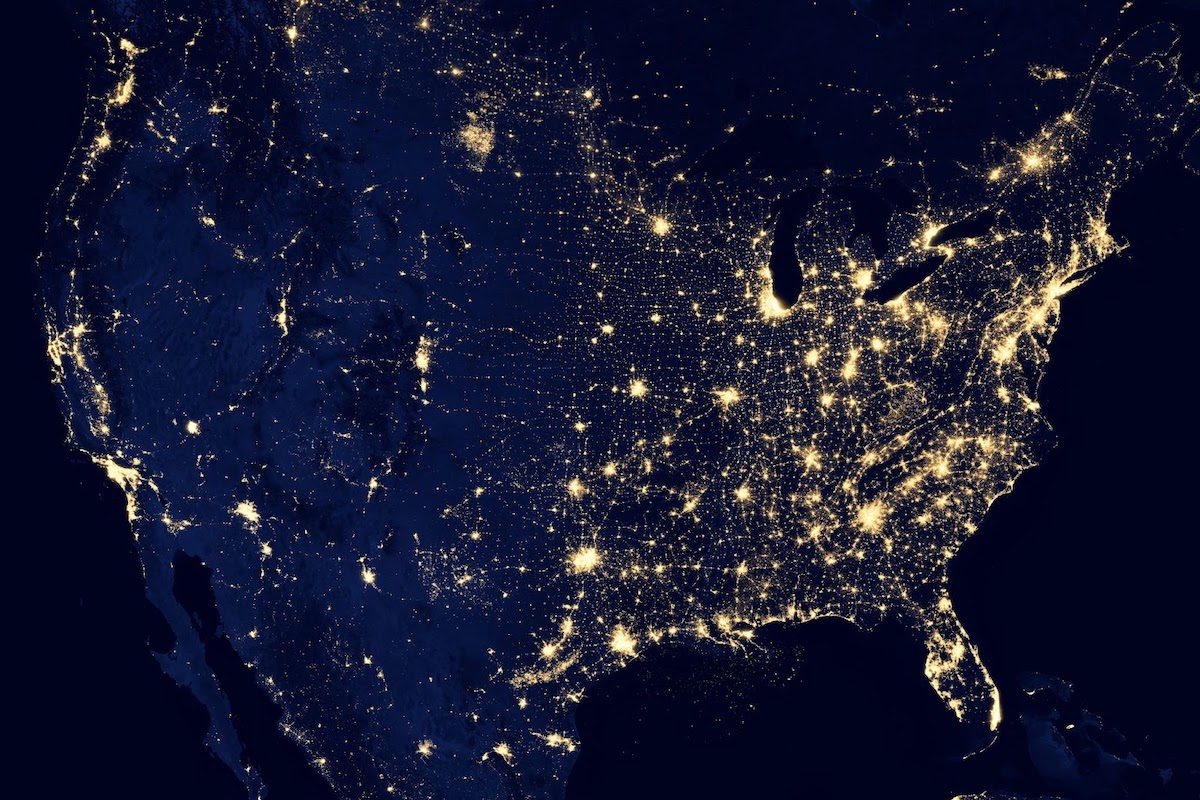Among US energy companies, Pacific Gas and Electric Company (PG&E) is a major employer across electrical, mechanical, civil, and computer engineering as well as skilled trades and customer operations. If you’re aiming to work at PG&E, this guide explains how the company typically hires, what to expect in your interviews, and the kinds of roles, and pay ranges, that PG&E have available today.
PG&E: Company Background
PG&E (which is a subsidiary of PG&E Corporation) is a combined natural gas and electric utility company that is headquartered at 300 Lakeside Drive in Oakland, California, following its relocation from San Francisco back in 2022. The company reports that they have approximately 28,400 utility employees and serve about 16 million people across their 70,000-square-mile territory in Northern and Central California.1 In 2024, their operating revenues were about $17.8 billion for electric operations and $6.6 billion for natural gas operations.2
How Hard Is It to Land a Job at PG&E?
Competition is high for most PG&E jobs. Many positions will require that you pass standardized pre-employment tests (for example, the Physical Test Battery for physical roles, the Clerical Test Battery for clerical roles, and the Work Orientation Inventory), that are followed by one or more interviews and post-offer assessments as applicable.3
How to Apply for a Job at PG&E
- Create a profile on PG&E’s careers site. Applications are all submitted online at jobs.pge.com.
- Check testing requirements. Each posting will list any potential required pre-employment tests (e.g., PTB, CTB, IST, WOI). If you are invited, you’ll receive testing instructions with an online window to complete them.
- Submit your application. Upload a current resume tailored to the role.
- Complete role-specific steps. Some roles will include secondary testing, driving screens, or post-offer physical assessments.
- Interview. Expect structured behavioral and technical interviews that are aligned to the job family. PG&E’s FAQ and role pages outline what to expect.
PG&E Application Process
Timelines will vary by role and business unit. Most candidates can expect at least several weeks to progress through the testing, interviews, and any required background or post-offer assessments. PG&E’s FAQ and testing pages detail the steps and accommodations.
PG&E Interview Questions (Examples)
- Why do you want to join PG&E?
- Where would you like to grow your career here over the next few years?
- Tell me about a time you worked effectively in a fast-paced or safety-critical setting.
- Describe a time you went the extra mile for a teammate or customer.
- PG&E operates 24/7. When have you adapted to overtime or on-call work?
(These are representative prompts based on common utility hiring practices; however, it’s recommended to always align your examples to the specific posted role’s duties that you are applying to.)
What’s It Like to Work at PG&E?

PG&E offers union-represented craft roles and professional roles, alongside many management positions. Many employee reviews highlight PG&E’s competitive pay and benefits and clear job ladders in operations and engineering.4
Pay and Benefits
Compensation for PG&E roles follows collective bargaining agreements and locality factors with professional roles typically posting their salary ranges. Look on PG&E’s website for specific pay and benefits information for each job.
Work-Life Balance
Schedules will vary depending on your role and region. Field and emergency response teams should expect overtime and storm/event mobilizations, but job postings will specify on-site and after-hours expectations.
Job Security and Advancement
Large utility companies like PG&E maintain structured training and progression (e.g., apprenticeships, PowerPathway) and lateral moves across gas, electric, and corporate functions.
PG&E Benefits
PG&E offers comprehensive benefits programs that span physical, emotional, and financial health, with additional resources for time off, accommodations, and work-life support. Benefits will vary by classification (represented vs. non-represented), location, and plan year.
Health & Mental Wellbeing. Medical, dental, and vision plans are available for employees and eligible dependents, along with free programs that support emotional wellness and mental health.
Time Off & Accommodations. Policies typically cover vacation, holidays, sick time, leaves of absence, and workplace accommodations to support different situations and stages of life.
Retirement & Savings. PG&E advertises a 401(k) with a company match and a cash-balance pension for many roles.
Tax-Advantaged Spending Accounts. Eligible employees can use a PG&E-funded Health Account and may enroll in Health Care and/or Dependent Care Flexible Spending Accounts (FSAs) to set aside pre-tax dollars for qualified healthcare expenses.
Education & Development. Tuition reimbursement is available for approved courses, and PG&E also provides training and development programs and leadership pathways for employees.
Recognition, Discounts & Travel. Programs include performance recognition/service awards, a commuter transit program, employee discounts, and business travel accident insurance.
Military & Veteran Benefits. PG&E highlights a robust Employee Assistance Program (EAP), relocation assistance for some jobs, employee discounts on PG&E gas/electric service, differential pay for active service, and Veterans Day as a paid company holiday.
Representative PG&E Roles
Note: PG&E posts specific pay that varies by location. Examples below reflect the employer-provided or union-referenced information and may differ by region, shift, or step progression.
- Utility Worker – Gas Transmission & Distribution (IBEW): Starting wage is around $36/hr. Duties include assisting construction/maintenance, pipe wrapping, traffic control, and leak survey tasks; PTB and WOI are typically required. DOT testing applies.5
- Electric Line Assistant (IBEW): Recent postings list starting wages around $33–$36/hr depending on locality. Assists journey/apprentice lineworkers on overhead/underground work; requires Class C license and often a Class A permit within months of hire.6
- Hydro Operator-in-Training (IBEW): Recent employer-provided range $43.62–$55.38/hr (Potter Valley posting). OITs monitor plant equipment, complete the training program, and communicate with control centers.7
- Substation Electrician – General Construction, Journey Level (IBEW): Posted regularly across regions; responsibilities include construction/maintenance of substation equipment, with travel and on-site work requirements. (Check the posting for the specific hourly range in your region.)8
For other craft roles (e.g., Traffic Control Flagger; Construction Operator—GC Gas; Apprentice Gas Control Technician; Vegetation Management Inspector), PG&E postings and IBEW 1245 letters/agreements outline duties, line-of-progression, and pay setting. Recent postings and third-party mirrors show Traffic Control Flagger starting wages around $26/hr in some locations; exact rates vary by locality and step.9
What Does It Take to Get a Job at PG&E?
Successful candidates will pair safety-first behaviors with the technical skills that are listed on each specific posting. For skilled trades, union apprenticeship pathways and PG&E’s PowerPathway both provide great structured training and interview preparation. For engineering and professional roles, it’s recommended to highlight any regulated-utility experience, project delivery experience in field conditions, and times that you have led cross-functional collaboration.
How to Get a Job at PG&E FAQ
Yes, PG&E is continually hiring.Check jobs.pge.com for all current openings.
There is no single company-wide “average” hourly rate. Pay will vary by the role, location, and union agreement. Check jobs.pge.com for up to date salary information for each role that you are interested in.
You can search and apply for jobs at jobs.pge.com. On this page, you can filter by category, location, and job level to find roles that are the best fit for you.
Yes, these will help particularly for craft and apprentice-track roles. PG&E’s PowerPathway program provides 160–480 hours of industry-informed training and interview preparation that is specifically aligned to utility roles.
References
- https://s1.q4cdn.com/880135780/files/doc_financials/2024/ar/2024-PG-E-Joint-Annual-Report-to-Shareholders.pdf
- https://www.pge.com/content/dam/pge/docs/about/pge-systems/PGE-Climate-Strategy-Report.pdf
- https://www.pge.com/en/about/careers/pre-employment-testing-program.html
- https://www.glassdoor.com/Salary/Pacific-Gas-and-Electric-Salaries-E15208.htm
- https://jobs.pge.com/job/american-canyon/utility-worker-gas-transmission-and-distribution/29673/85704310896
- https://www.glassdoor.com/job-listing/electric-line-assistant-electric-td-pge-corporation-JV_IC1146557_KO0%2C35_KE36%2C51.htm?jl=1009485711429&
- https://www.glassdoor.com/Salary/Pacific-Gas-and-Electric-Salaries-E15208.htm
- https://jobs.pge.com/category/maintenance-construction-operations-jobs/29673/77825/1
- https://ibew1245.com/files/PGE-docs/LA-R2-24-07-PGE.pdf
About us: Career Karma is a platform designed to help job seekers find, research, and connect with job training programs to advance their careers. Learn about the CK publication.

